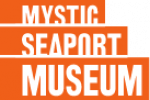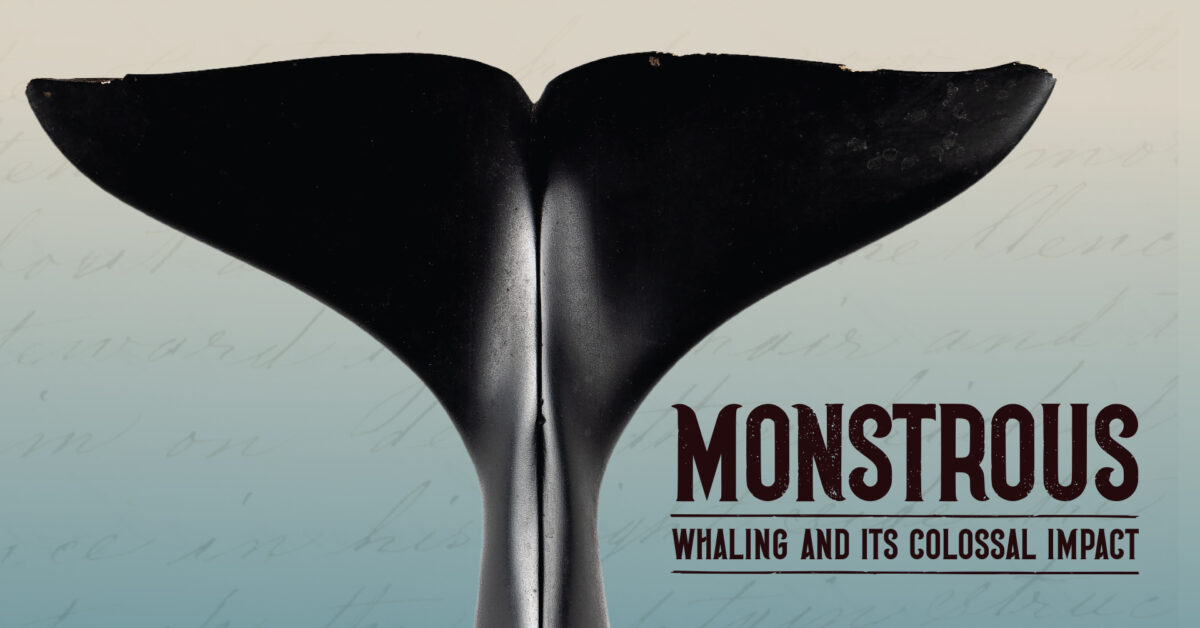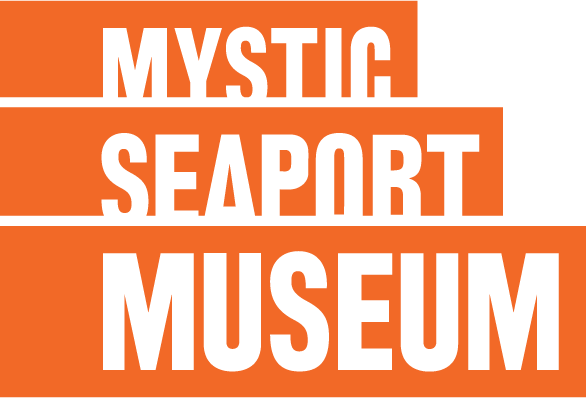Mystic, CT. April 14, 2025 – Mystic Seaport Museum is pleased to present Monstrous: Whaling and Its Colossal Impact, an exhibition that explores the history, significance, and social impact of the whaling industry. Opening on May 24, 2025, and on view until February 16, 2026, the exhibition will feature seldom seen historic artifacts from the Museum’s vaults including specimens, tools, documents, photographs, and ephemera all in dialogue with contemporary artist Jos Sances’s Or, The Whale, a massive 51-foot scratchboard mural of a sperm whale chronicling the evolution of American industrialization.
Between the 1820s and 1920s, the demand for whale oil—prized for its non-drying and non-corroding properties in candles, lamps, and the burgeoning machinery of the Industrial Revolution— was immense. Estimated to have killed over half a million animals in the 19th century, these floating oil factories required crews of men who endured arduous voyages. Each was a one-million-dollar investment in today’s dollars, highlighting the crucial, yet ultimately unsustainable, role of whale oil as the petroleum of its time.
The perilous reality of the whaling trade is starkly illustrated by the tools of the hunt. From the menacing, oversized harpoons and darting guns to the wickedly sharp cutting-in tools and blubber hooks exceeding three feet in length, these implements represent the life-threatening efforts undertaken to secure precious whale byproducts. The exhibition also highlights moments of innovation, such as the circa 1845 iron harpoons with swiveling heads designed by the African American blacksmith Lewis Temple, an ingenious adaptation created to ensure a secure hold on their massive prey, as violently depicted in the 1835 image Capturing a Sperm Whale. Once caught, the whale’s blubber would be boiled down on the deck of the ship in gigantic trypots like those on view in the exhibition, each of which held around 200 gallons of oil.
Aside from the immensely valuable oil and blubber, whaling crews created artistic and cultural consumer goods to offset the grueling boredom while at sea. Monstrous will show a wide range of scrimshaw engravings on whale bones or teeth, baleen dress stays, knitting needles, and a small flask of ambergris, the waxy substance from whale intestines prized for its use in perfumes.
Monstrous connects historical artifacts with a contemporary perspective by showcasing Jos Sances’s monumental scratchboard Or, The Whale, a nearly life-sized mural of a sperm whale. This piece memorializes the many social and political challenges Americans faced during the country’s industrialization, drawing parallels between the exploitative practices of the whaling era and the ongoing societal issues examined in the exhibition.
The human stories of life on a commercial whale ship or whaler are told by the Mystic Seaport Museum documentation and ephemera. While primarily male, whaling crews occasionally included women, who joined the voyages as wives and mothers, but sometimes played the roles of navigators, correspondents, nurses, managers, and log keepers. The last woman to sail on the Charles W. Morgan during its whaling career, Charlotte (Lottie) Church, kept a ship’s log as her role as assistant navigator. Historic photographs on-view in Monstrous also reveal the multicultural makeup of whaling crews. As whaling expeditions lasted years and traveled globally, they would amass crew members in foreign ports. Whaling was also a job for both free and formerly enslaved Black men: Monstrous includes the Museum’s stately portrait of Antoine DeSant, an accomplished Cape Verdean whaler who settled in New London in 1860.
By bringing together historical remnants of the whaling era with the contemporary artistic interpretation, Monstrous creates a vital dialogue across time. This exhibition encourages reflection on the complex relationship between human ambition, resource exploitation, and societal change, offering valuable insights for contemporary audiences at a time when we once again examine our sources of energy.
###






